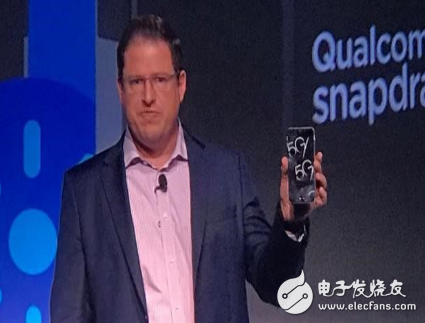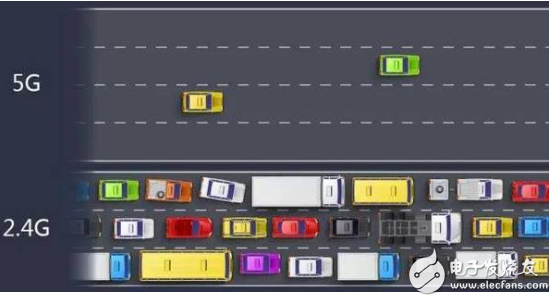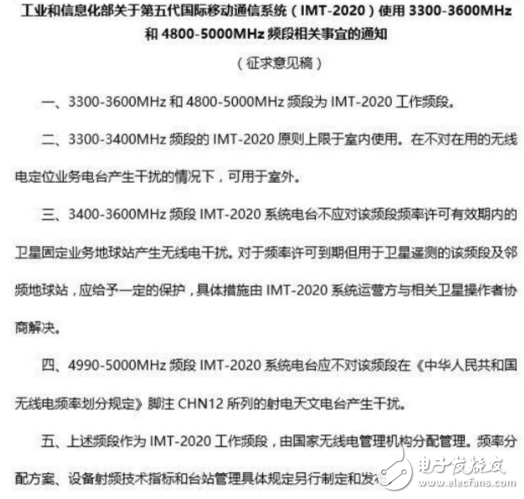Recently, Qualcomm's latest 5G-enabled mobile chipset has caught a lot of attention, but some people are wondering—has the 5G standard even been finalized yet? How is it possible for Qualcomm to develop and test a 5G chip before the official standard is released? The answer is simple: Qualcomm has been preparing for this moment for a long time. On October 17, 2017, in a press event held in Hong Kong, Qualcomm officially announced its 5G mobile chipset. Even though the 5G standard was still in development at that time, the chipset was already capable of achieving data transfer speeds exceeding one gigabit per second. It had also been successfully tested on the 28GHz frequency band, which is expected to be used for 5G deployment. Analysts believe that Qualcomm is once again leading the way into the 5G era, leaving competitors behind. However, according to public information, the 5G standard was not yet finalized at that time. Many countries and companies were still in the process of defining it. Even under the most optimistic scenario, the finalization of the 5G standard was expected to take until around 2019. This raises an important question: why did Qualcomm choose to announce a 5G chipset so early, when the standard was still unclear? We all know that the evolution of communication technology—from 2G, 3G, to today’s 4G—has brought a significant improvement in internet speed. From the slow GRPS/EDGE speeds of 100–200 kbps in the 2G era, to the 40–60 Mbps speeds of 4G, each generation has offered a richer mobile experience. According to industry expectations, the theoretical peak speed of 5G networks could reach 10 Gbps or more, meaning a 10-fold increase over 4G. The question now is: how can we achieve such high speeds with 5G? The answer lies in two main approaches: improving spectrum efficiency and expanding the available spectrum resources. Spectrum efficiency refers to the maximum data rate that can be transmitted per unit of spectrum. While improvements in techniques like 4x4 MIMO, 64QAM, and beamforming have helped boost efficiency, the limits of this approach are becoming apparent. Simply increasing efficiency won’t be enough to reach 10 times or even 100 times the speed of 4G. Therefore, the only viable path forward is to use more spectrum resources. Think of it like road lanes—if there are more lanes, more cars can pass at the same time. Similarly, more spectrum means higher data transmission rates. In the case of 4G, operators have already started using multi-carrier aggregation to bundle multiple 20MHz bands and achieve much faster speeds. So, even with 4G, you can get speeds close to what 5G promises, as long as enough spectrum is available. Now that we understand how network speed is increased, let’s look at how Qualcomm managed to achieve a gigabit speed with its 5G chipset. According to Qualcomm, their 5G solution uses multiple 100MHz 5G carriers to deliver download speeds above 1 Gbps. In fact, even with 4G networks, operators have already achieved similar speeds by using multi-carrier aggregation. For example, with five 20MHz carriers, they can reach over 1 Gbps in ideal conditions. So, from a speed perspective, Qualcomm’s 5G isn’t necessarily superior—it’s more about the infrastructure and spectrum availability. To achieve 1 Gbps or more, 5G requires at least 100 MHz of spectrum. However, low-frequency bands—which are better for wide coverage—are already heavily occupied by 2G, 3G, and 4G networks. That’s why Qualcomm chose to test in the 28GHz band, which offers higher speeds but limited range. This makes it suitable for small-scale deployments, like dense urban areas, but not for widespread coverage. As a result, Qualcomm still has a long way to go before 5G can truly become a global standard. According to current plans, 5G is expected to enter our lives around 2020. Compared to 4G, especially 4G+, the actual speed improvements may not be as dramatic as expected. With multi-carrier aggregation, 4G networks can already reach speeds above 1 Gbps, making them competitive with early 5G implementations. Additionally, the lack of low-frequency spectrum for 5G is slowing down its development. Currently, many countries are testing 5G in different frequency bands. China and others are focusing on 3.5GHz and 4.9GHz, which are seen as the most promising for urban coverage. As research continues, more companies will join the race, and we’ll have to wait and see how 5G evolves in the coming years. Brake Disc For ISUZU ISUZU Brake Disc Replacement,ISUZU Auto Brake Disc,ISUZU Car Brake Disc,ISUZU Automobile Brake Disc Zhoushan Shenying Filter Manufacture Co., Ltd. , https://www.renkenfilter.com

